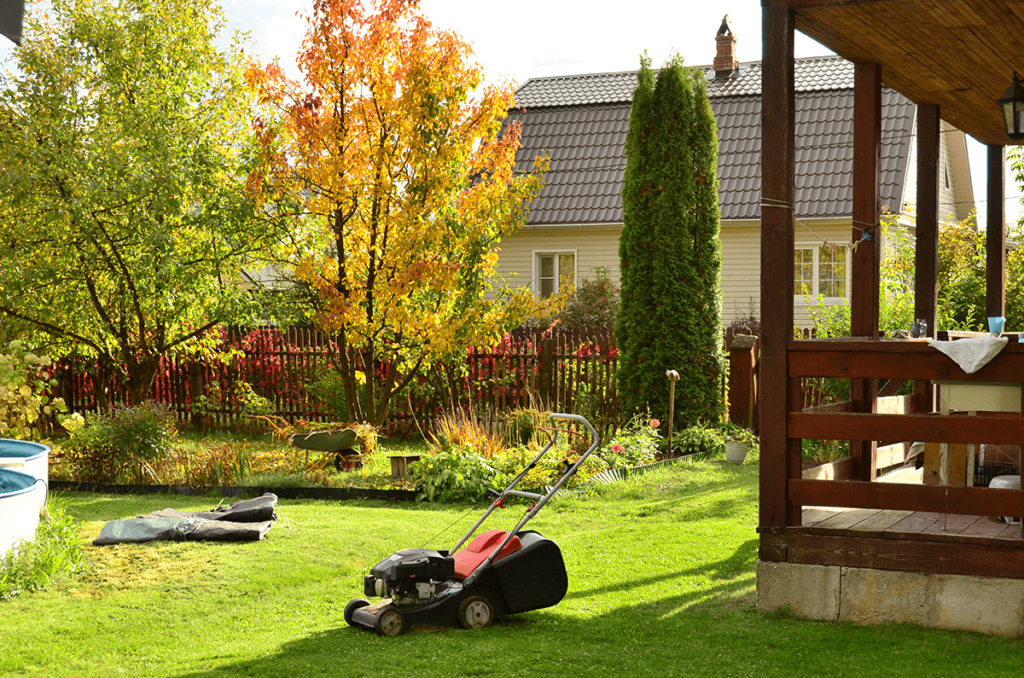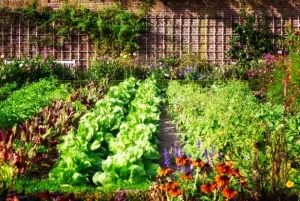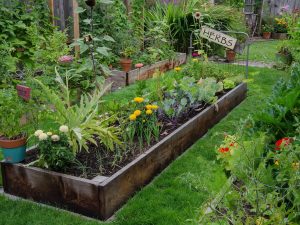Fall is a time when the leaves start changing, days start getting crisp, and your grass is starting to go dormant for the winter. It isn’t normally the time that people start to think about prepping their lawn. However, if you are looking for a thick, green dazzling lawn in the spring, you need to start your work now. The cool, moist weather in autumn helps your grassroots develop better next spring.
Water. Water. Water.
Unless your grass is getting about one (1) inch of water a week, the grassroots are getting dehydrated. People tend to let you on watering as we get into fall thinking that nature will give their lawn what it needs. Keeping your grassroots well hydrated will keep them healthier and more likely to flourish in the spring. A good rule is to keep watering your lawn until the first hard frost occurs. We have several products that can help ensure your lawn is getting enough water, check out our product selector to see what the best options are for your lawn.

Keep Cutting and Raking
Your grass will continue to grow until the first hard frost occurs, maintaining a proper height protects your lawn. Cutting it too short is bad for the roots, root depth is proportional to cutting height, and impedes your lawn’s ability to withstand the winter cold and dryness. Leaving your grass too long makes it vulnerable to fungi. A good height for your grass is 2 ½ to 3 inches.
Regular cutting also helps to remove/break up the leaves that have fallen. Leaves are not good for your grass; they block the light and trap moisture. Leaving the leaves on your grass through the winter will lead to grass that is soggy and dead or dying.
Fertilize
Fall is the most important time to fertilize your lawn. Fertilizer gives your lawn the nutrients it needs to get through the winter and helps ensure that your grass will bounce back and grow stronger in the spring. A late fall application of a slow-release granular fertilizer is highly recommended. A soil test can tell you how many nutrients your lawn currently has, you want to ensure that your fertilizer has nitrogen, phosphorus, and potassium in it. Nitrogen sparks chlorophyll to thrive, thus protecting the grassroots. Potassium aids in root growth, disease protection, drought tolerance, and cold resistance. Phosphorus stimulates strong root growth.
We do caution spreading fertilizer near water sources, we recommend maintaining a 5-foot buffer wherever water is present. Spreading fertilizer close to waterways can be harmful, they are vulnerable to contamination from any runoff. Check out the Autumn Fertilizer Guide to get more info on when and how to fertilize.
Seeding
Fall is the best time to seed your lawn, the weather conditions are typically ideal to fill in those thin or bare spots in your lawn. Think about it, the ground is warm, moisture is plentiful (if not, you can control this with timers on your sprinklers to ensure it is), nights are cool, and the sun is not as hot during the day as it is in the summer.
Each of the steps above needs to be done at the right time for the best results. If you seed too late the seedlings will be too tender to survive the frost. If you fertilize too early the grass will send up tender blades that will get hammered by the cold. If you fertilize too late the grassroots won’t be able to absorb all those nutrients, you’re feeding them.
Let Melnor help you get the best lawn in the neighborhood.




